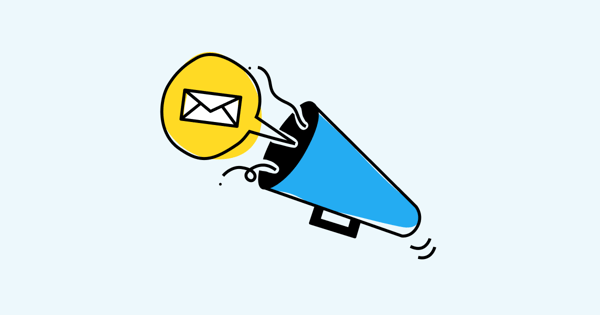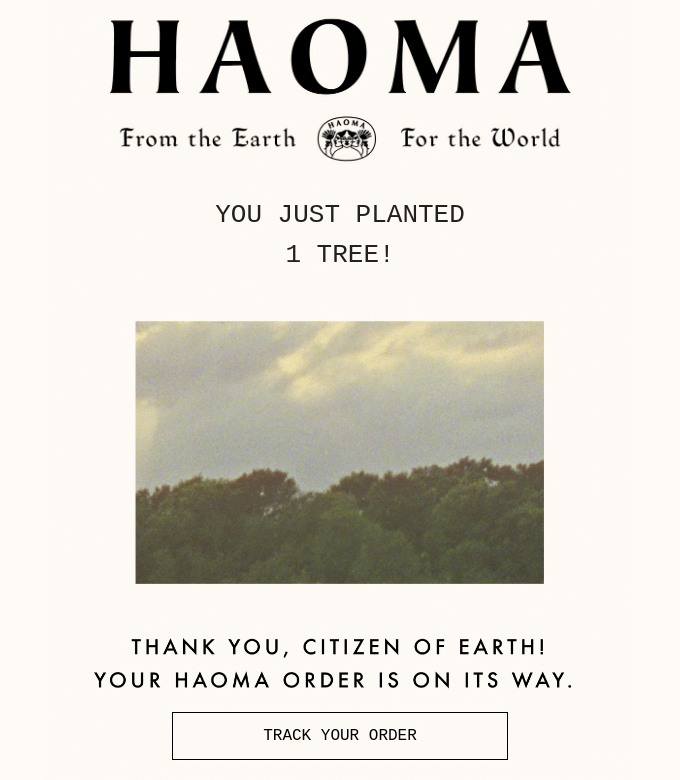Anyone who’s ever had an argument will be all too familiar with the phrase: “It’s not what you said, it’s how you said it.”
Those words of wisdom are just as relevant to ecommerce marketing as they are to interpersonal disputes. Get the tone of your emails wrong and you’ll leave customers scratching their heads; nail it and you’ll be rewarded with more email opens, click-throughs, and sales.
In this article, I’ll define exactly what we mean by “tone in email”, discuss its importance, and explain how to adapt your tone of voice for different types of emails.

Voice vs Style vs Tone in Email
The phrases “brand voice”, “style”, and “tone of voice” are often used interchangeably. But they’re actually three different—yet interconnected—elements of your broader ecommerce marketing strategy.
Let’s examine each in turn…
What Is Brand Voice?
Your brand voice is who you are.
For instance, you could (loosely) define Brooklinen’s brand voice as aspirational and supportive…
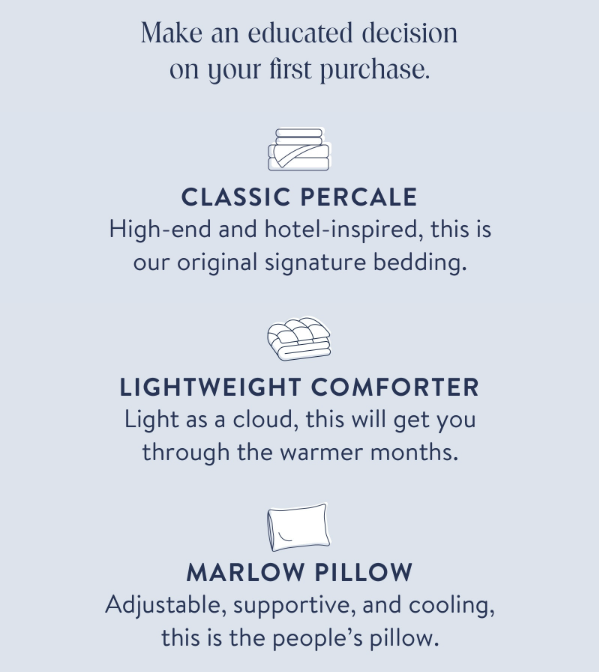 …whereas Chubbies Shorts is more friendly and irreverent:
…whereas Chubbies Shorts is more friendly and irreverent:
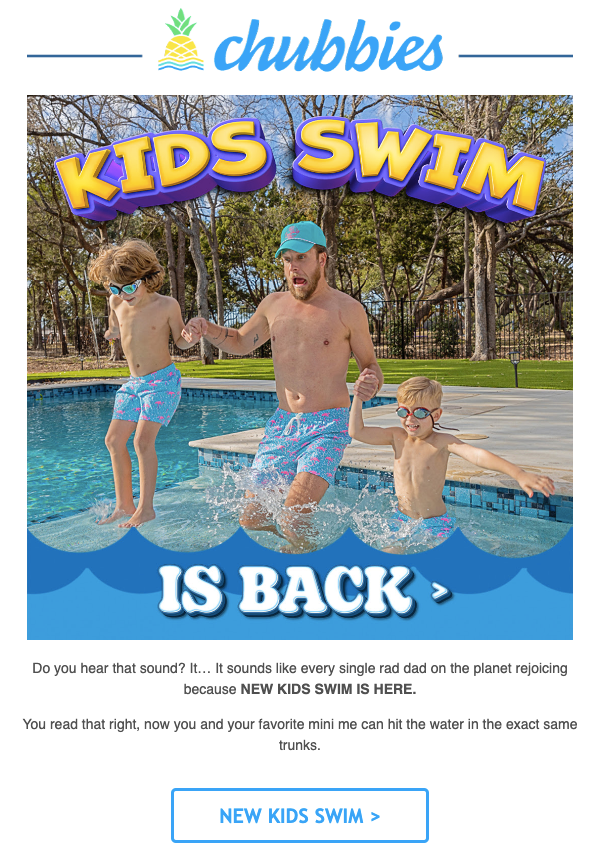 Once defined, your brand voice underpins all of your marketing communications—you wouldn’t, for instance, adopt a totally different voice for a new campaign, or vary it by audience.
Once defined, your brand voice underpins all of your marketing communications—you wouldn’t, for instance, adopt a totally different voice for a new campaign, or vary it by audience.
What Is Brand Style?
Brand style is all about how the words you write look and feel on the page (or in an email or social post).
For instance, the sophisticated folks at Saucey are sticklers for an em dash…
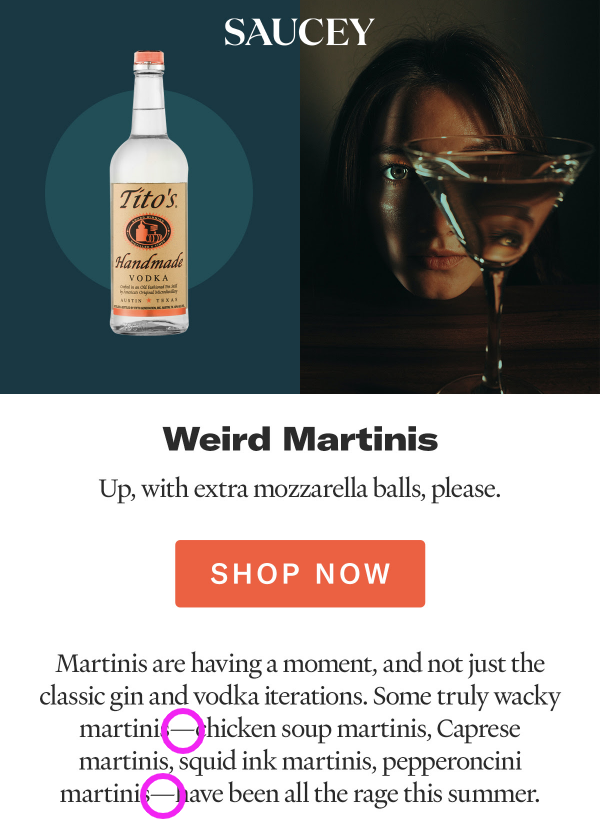 …while AYR is a big fan of all-lowercase text:
…while AYR is a big fan of all-lowercase text:
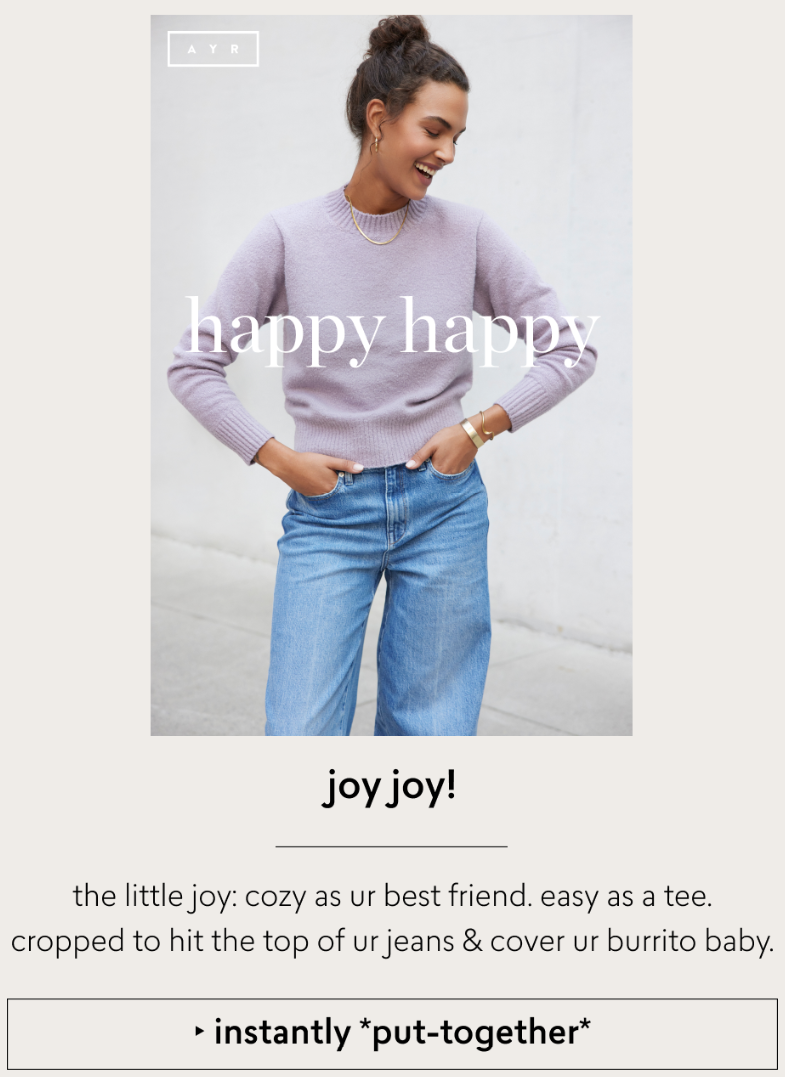 Like brand voice, style remains constant across all your campaigns, channels, and platforms. Because life’s complicated enough without worrying whether or not your email subject line needs an Oxford comma.
Like brand voice, style remains constant across all your campaigns, channels, and platforms. Because life’s complicated enough without worrying whether or not your email subject line needs an Oxford comma.
What Is Tone in Email?
Like the speed of light, brand voice and style are constant.
Meanwhile, tone of voice is more like the speed of sound: it’s only very roughly constant and depends on a lot of different factors.
To put that in less scientific terms, you wouldn’t strike a totally different tone for every email you send—that’d be confusing. But you should absolutely switch it up depending on:
- The purpose of your email
- Who you’re writing for
Later in this article, I’ll share specific examples of how to vary your tone for different email types.
The Importance of Tone in Email
At this point, you might be thinking:
“So I need to write with a whole different tone of voice depending on the type of email I’m sending? Sounds complicated. What’s the point?”
In reality, the words you use—and how you use them—plays a major part in how consumers feel about your brand. Which is a big deal given that:
- Nearly 90 percent of shoppers will pay more for a product sold by a brand they trust (source)
- Consumers spend, on average, 25 percent more on trusted brands (source)
Specifically, acing your tone in email can help you…
Stand Out From the Competition
There might be literally thousands of other brands selling the same types of products as you.
Competing on price eats into your margins and might harm your public perception; trying to distinguish yourself on quality can be a tough sell (and, if you don’t manufacture the products yourself, it can be difficult to back up your words).
By contrast, it’s easy to stand out through your tone of voice, because it’s totally in your hands. If your niche is full of formal, professional-sounding brands, you can make a splash by adopting a more casual, personable tone.
Clearly Communicate Your Message
As we already know, tone in email is fluid.
Changing it to match the type of email you’re writing helps you communicate your message more clearly.
Which, in turn, means you’re more likely to generate the desired results from each email you send—whether that’s nurturing a new ecommerce lead, recovering an abandoned cart, or winning back a lapsed customer.
Send Emails That Feel Personal
I’m guessing you already personalize your emails. If not, you definitely should be, because 73 percent of shoppers expect brands to understand their unique needs and expectations.
But remember: just because an email is personalized, that doesn’t automatically make it personal.
Sending emails that feel personal is all about using a tone that resonates with your audience. It reflects how they view your brand and what they want from you: Do they see you as a trusted source of information? A friendly voice that just gets their shopping preferences? An entertaining distraction in their inbox?
Adapting Tone in Email for Different Goals
No two brands have an identical voice, style, or tone.
Still, there are some general rules that apply to different ecommerce email types. Follow these guidelines to successfully tweak your tone for each and every workflow…
Cart Abandonment Emails: Keep It Supportive
With the average documented online shopping cart abandonment rate standing at a frankly monstrous 70.19 percent, retailers know they’re missing out on a ton of sales from customers who nearly converted—then dipped.
Perhaps understandably, this causes an air of desperation to creep into a lot of abandoned cart emails. And desperation is a massive turnoff.
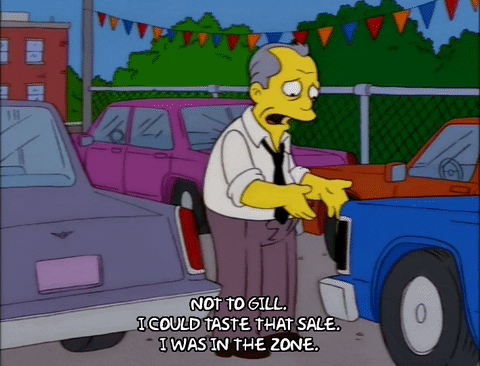 Instead of trying to force the sale, keep your cart abandonment workflows helpful and supportive, just like this example from PROVEN Skincare:
Instead of trying to force the sale, keep your cart abandonment workflows helpful and supportive, just like this example from PROVEN Skincare:
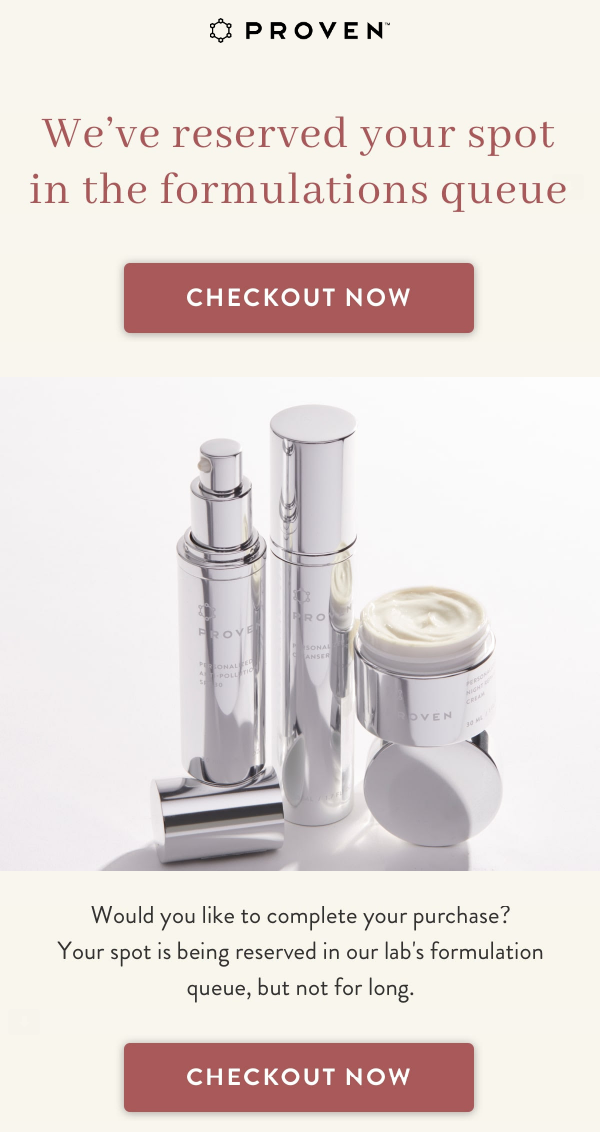 Sure, there’s a hint of a hard sell in phrases like “not for long” and “checkout now”, but for the most part, PROVEN keeps this email support-focused. It’s all about ensuring the customer doesn’t miss out on those fantastic, in-demand products the customer was eyeing up.
Sure, there’s a hint of a hard sell in phrases like “not for long” and “checkout now”, but for the most part, PROVEN keeps this email support-focused. It’s all about ensuring the customer doesn’t miss out on those fantastic, in-demand products the customer was eyeing up.
Welcome Series: Softly, Softly
Capturing a new ecommerce lead is a big deal.
Get your messaging right from this point on and that would-be customer will make their first purchase, place a bunch of repeat orders, leave you a glittering review, and recommend you to their loved ones.
But, just like with abandoned cart emails, your welcome series shouldn’t be about rushing to close the deal.
Instead, ensure your relationship with new leads starts on the right foot by employing a friendly, low-pressure tone of voice.
Three Ships Beauty shows us how to do it. Their welcome series starts with a brief introduction to their brand story…
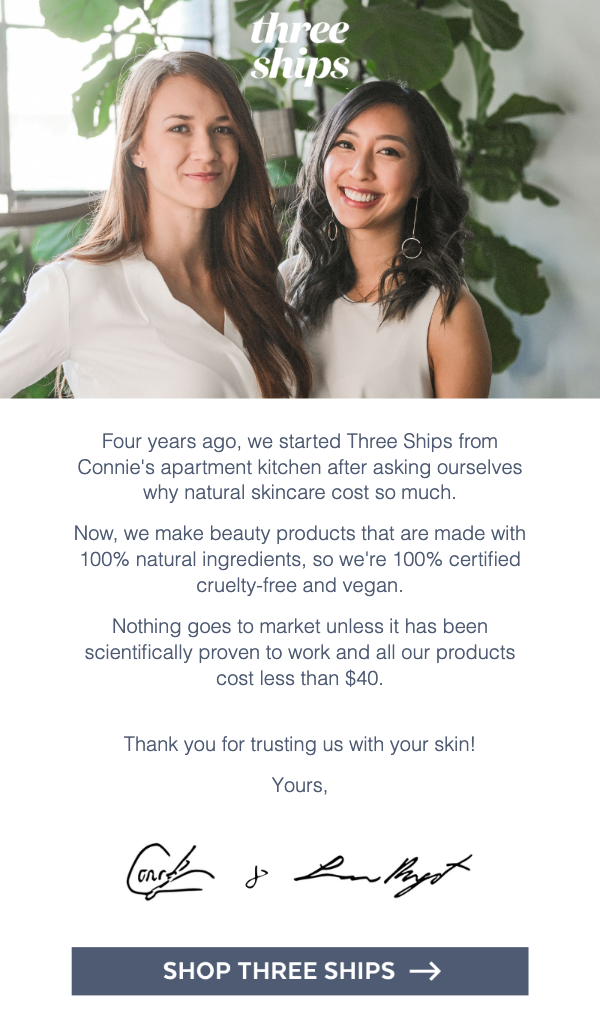 …followed by a super-personal, text-only email full of skincare tips and a link to the brand’s two-minute skin quiz:
…followed by a super-personal, text-only email full of skincare tips and a link to the brand’s two-minute skin quiz:
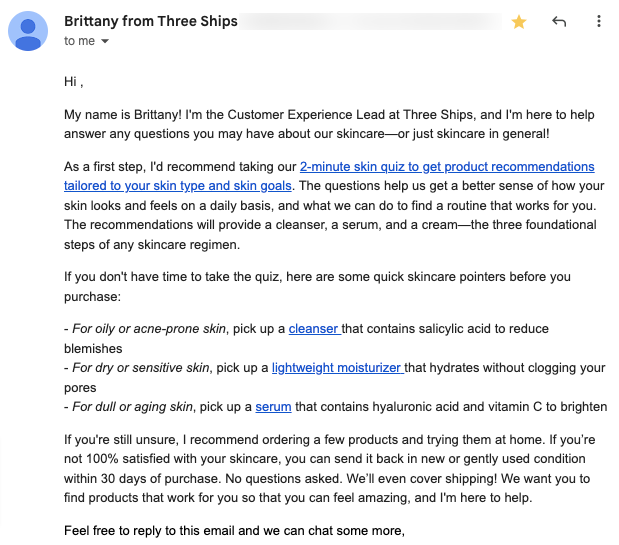 We’re not going to unpack their entire welcome series here—it’s six emails long. But you might be surprised to learn that none of those messages contains a single discount code or product giveaway.
We’re not going to unpack their entire welcome series here—it’s six emails long. But you might be surprised to learn that none of those messages contains a single discount code or product giveaway.
Instead, Three Ships is 100 percent focused on laying the foundations for long-term customer relationships.
Sales Launch Emails: Spark Excitement
Discounting is a surefire recipe for ecommerce success, right?
Not necessarily.
Turns out sales aren’t a guaranteed money-spinner. In fact, 25 percent of consumers say they’re less likely to regularly buy from brands that always run sales, while 38 percent insist constant promotions make brands look “cheap” and “unfashionable”.
This teaches us a valuable lesson about how to promote an upcoming or just-launched sale: if you don’t spark excitement, your once-in-a-lifetime, too-good-to-be-true offer risks falling flat.
Sunglasses brand Sunski does a fantastic job of building anticipation for its summer sale in this email:
 That screenshot only contains a couple dozen words, yet it’s packed with exciting, anticipation-building phrases like:
That screenshot only contains a couple dozen words, yet it’s packed with exciting, anticipation-building phrases like:
- Epic deal
- Something big is coming
- Don’t miss out
Remember, attention spans are short, so the tone of your email needs to cut through fast.
Scarcity Emails: Honesty Is the Best Policy
We all know that communicating a sense of scarcity and urgency can be an extremely effective way to close the deal.
But your customers aren’t stupid. If they were, why would they buy from an incredible brand like yours? So if you’re trying to instill a false sense of scarcity where none really exists, they’re going to notice.
For what it’s worth, we reckon the best way to adapt the tone of your emails to build scarcity is, simply, to tell an honest story.
This is a masterful example from the team at Apothékary:
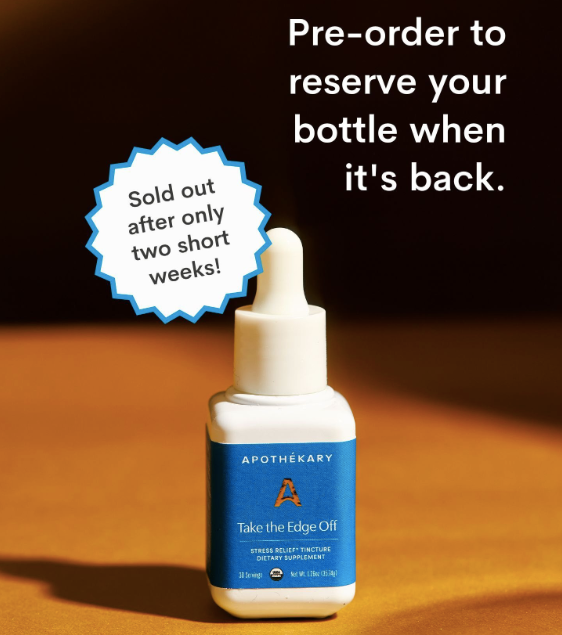 Rather than yet another email claiming this product will be gone tomorrow, Apothékary tells customers that it’s already sold out.
Rather than yet another email claiming this product will be gone tomorrow, Apothékary tells customers that it’s already sold out.
Sure, we’ve only got their word for it. But the fact they’re only taking pre-orders for the product in question makes this message pretty believable—which, in turn, creates a feeling of scarcity and urgency around the brand’s other products.
As customers, it makes us think: I’d better act fast because their last release flew off the shelves.
CSR Emails: Ratchet Up the Formality
Here’s an interesting case study for you.
Earlier, we described Chubbies as a brand with a friendly, irreverent voice. But how do they adapt their tone in email for subjects that are, by necessity, more formal?
Corporate social responsibility (CSR) emails are a good example of a more serious email format. Sure, they’re still part of your overall marketing strategy—but taking a light-hearted approach to issues like sustainability and inclusivity is risky, to say the very least.
For my money, Chubbies strikes exactly the right tone in this CSR email:
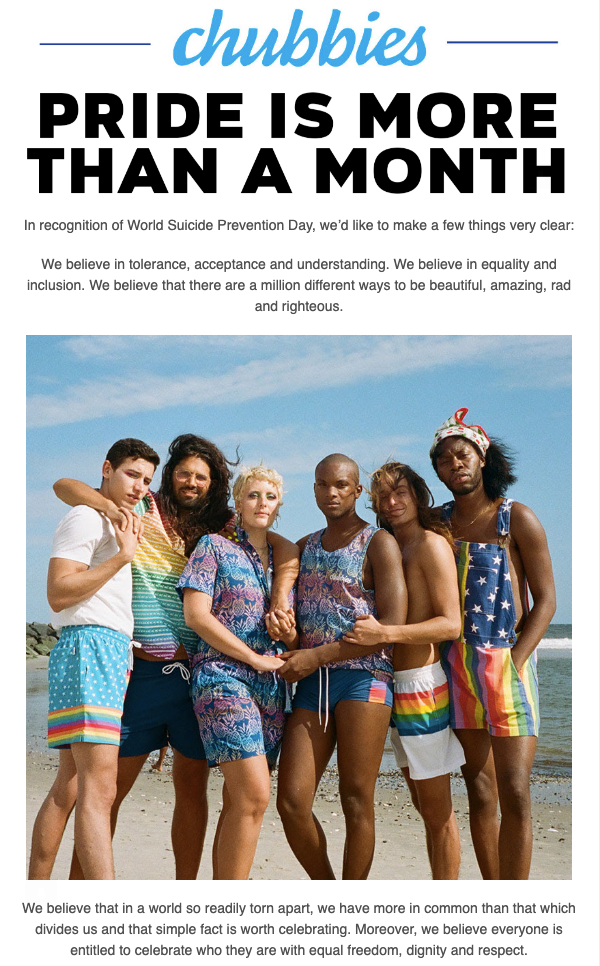 While the vibe is less zany than the company’s “regular” emails, phrases like “rad and righteous” ensure it still feels on-brand.
While the vibe is less zany than the company’s “regular” emails, phrases like “rad and righteous” ensure it still feels on-brand.
Of course, you might wonder whether Chubbies needs to be talking about Pride Month or World Suicide Prevention Day. But given that three-quarters of Gen Z and Millennial consumers seek out brands that support the causes they believe in, silence simply isn’t an option.
Order Confirmation Emails: Be Clear and Concise
When a customer buys something, they’re eager to know the transaction went through smoothly and learn what happens next. Which explains why order confirmations have the highest average open rate of any email type, at 58.32 percent.
Recipients are looking for specific information about their order, so these emails aren’t the place for lots of flowery marketing language.
But that doesn’t mean your order confirmation emails need to look, and read, like a purchase invoice.
In this example, skincare brand HAOMA Earth conveys its eco-friendly values without distracting from the email’s main goal—telling the customer their order is en route:
It’s all about adopting a clear, concise, un-fluffy tone of voice. Give yourself a few words to further your brand story and make the customer feel good about buying from you, then get to the point.

Craft On-Brand, Personal Emails With Drip
Nailing your tone of voice isn’t the only way to make your emails feel more engaging and personal. Design is a major factor, too.
Designing beautiful, on-brand emails that convert can be tough. But Drip makes it easy with our intuitive point-and-click email builder and our library of 50+ customizable, professionally designed ecommerce templates.
Try it out today by signing up for your free 14-day trial!
